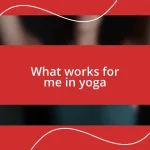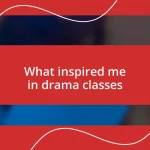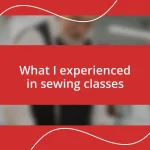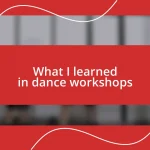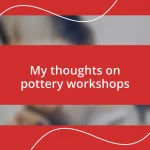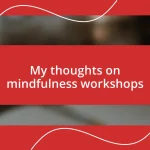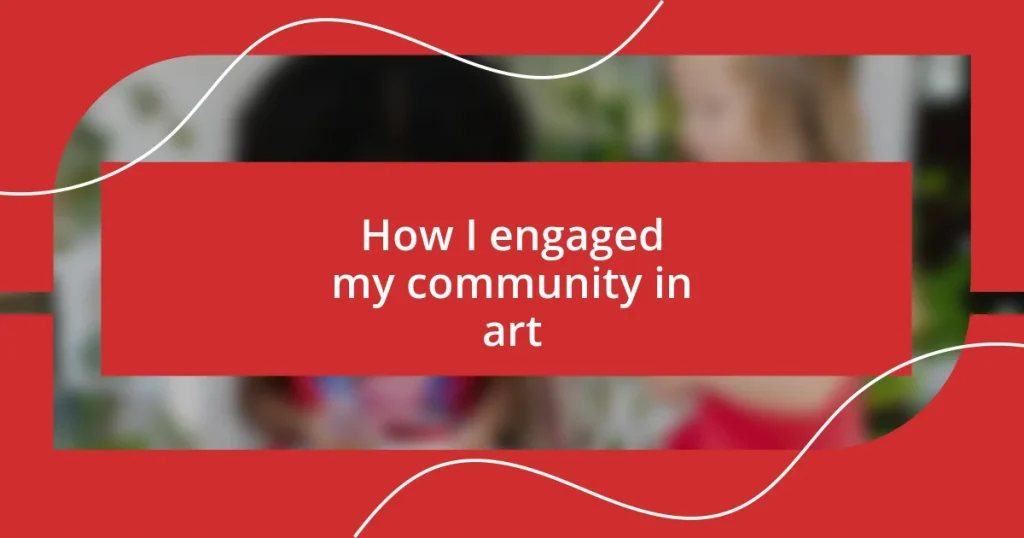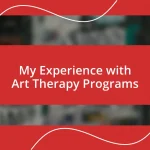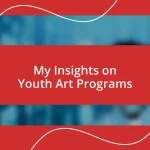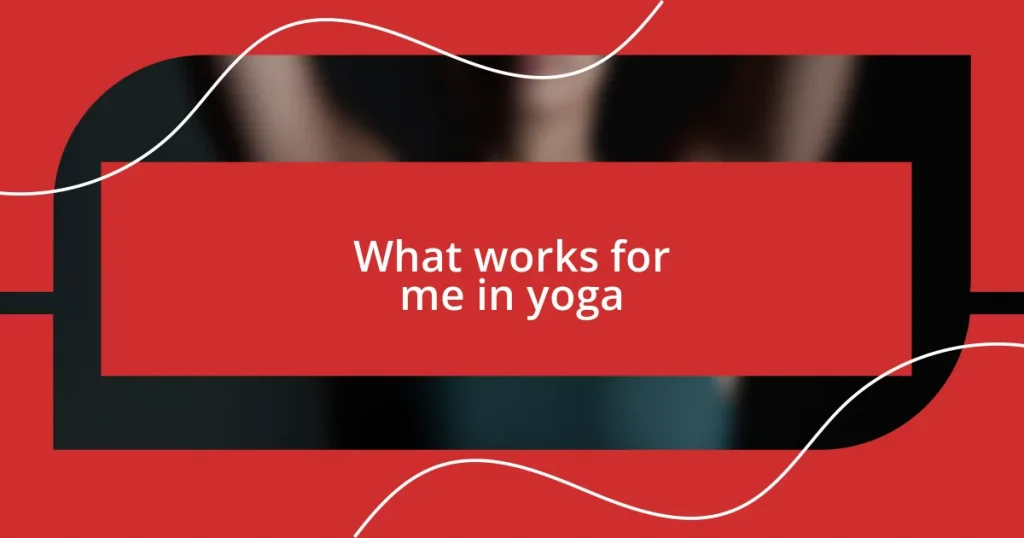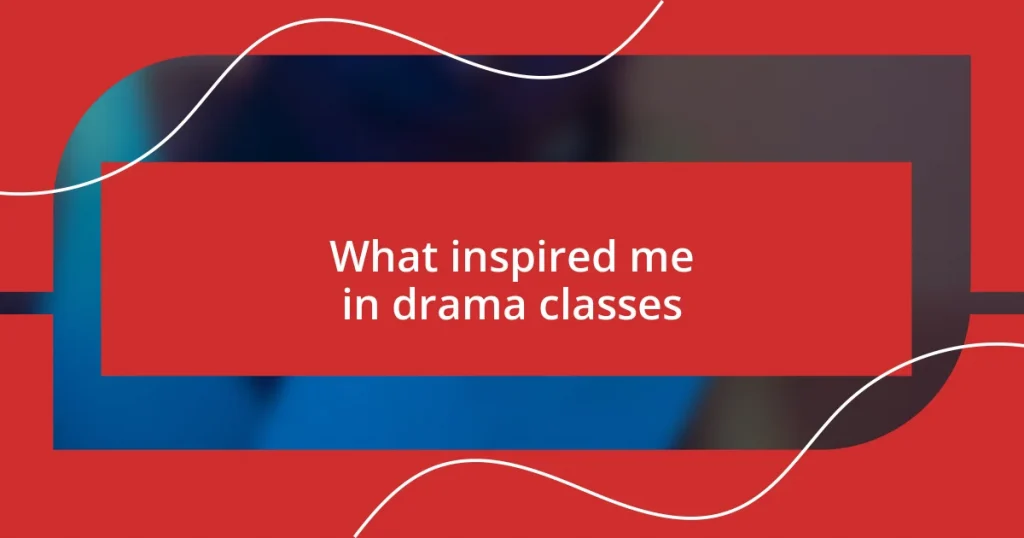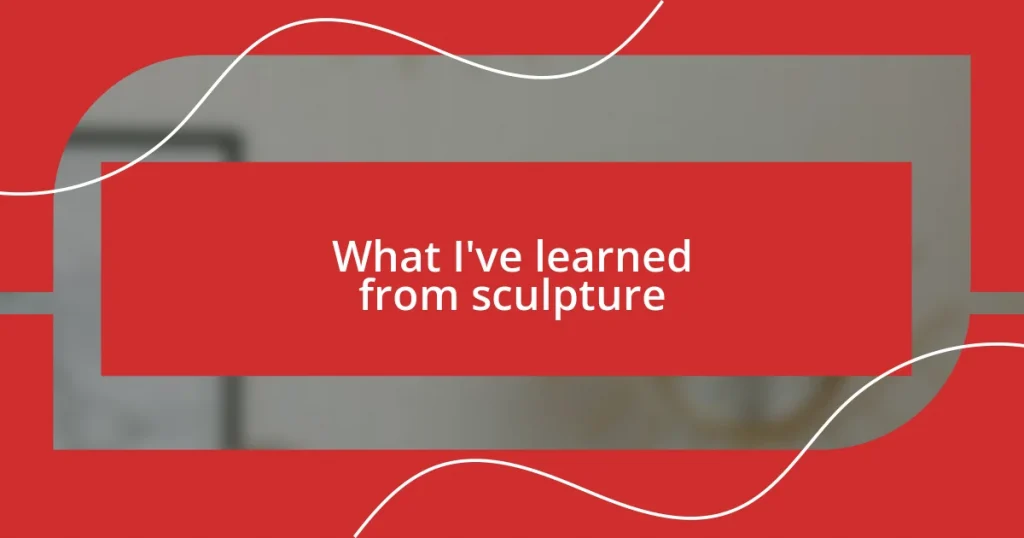Key takeaways:
- Community engagement in art fosters connections, transforms participants into contributors, and serves as a catalyst for social change and shared narratives.
- Effective engagement involves identifying community needs through strategies like surveys, focus groups, and casual events, creating art initiatives that resonate emotionally and culturally.
- Sustaining long-term involvement is achieved through building relationships, being responsive to participant feedback, and celebrating milestones to strengthen community bonds.

Understanding community engagement in art
Community engagement in art is more than just collaboration; it’s about forging connections that resonate deeply with people’s shared experiences. I remember when I hosted a mural project in my neighborhood, and I was surprised by how many stories emerged during the brainstorming sessions. What if art could be a mirror reflecting the community’s soul? This notion motivated me to create spaces where everyone felt valued and heard.
Participation can often transform passive spectators into active contributors, fostering a sense of belonging. I recall how one shy participant found their voice through painting—a talent they didn’t even know they had. Isn’t it fascinating how art can unveil hidden potentials? Witnessing that transformation opened my eyes to just how critical engagement is in weaving the community fabric.
Moreover, community art initiatives can address social issues and spark conversations that might otherwise be overlooked. After we completed our mural, people began discussing themes of resilience and hope in our shared space. Could art serve as a catalyst for change in our communities? In my experience, the answer is a resounding yes, as art invites reflection and dialogue, creating a bridge between individuals and their shared narratives.

Identifying community needs and interests
To effectively engage with a community through art, the first step is identifying what matters most to its members. In my previous experiences, I found that holding informal gatherings allowed people to share their thoughts and passions openly, revealing interests I never anticipated. Listening to these diverse voices was eye-opening, demonstrating the importance of genuine dialogue in uncovering community needs.
Here are some strategies I’ve found useful in this process:
– Surveys or Questionnaires: Distributing simple forms to gather feedback on what types of art initiatives excite people.
– Focus Groups: Small discussions can provide deeper insights into specific themes or artistic directions.
– Community Events: Hosting casual meet-ups encourages spontaneous conversations about interests and needs.
– Social Media Polls: Utilizing platforms like Facebook or Instagram to reach a wider audience and generate buzz.
– Collaboration with Local Organizations: Partnering with schools or nonprofits can help tap into existing networks and resources.
By employing these strategies, I’ve felt a significant shift in the community’s enthusiasm and commitment towards art projects. It’s incredibly rewarding to see how revealing these interests can transform a simple idea into an initiative that truly resonates and impacts lives.
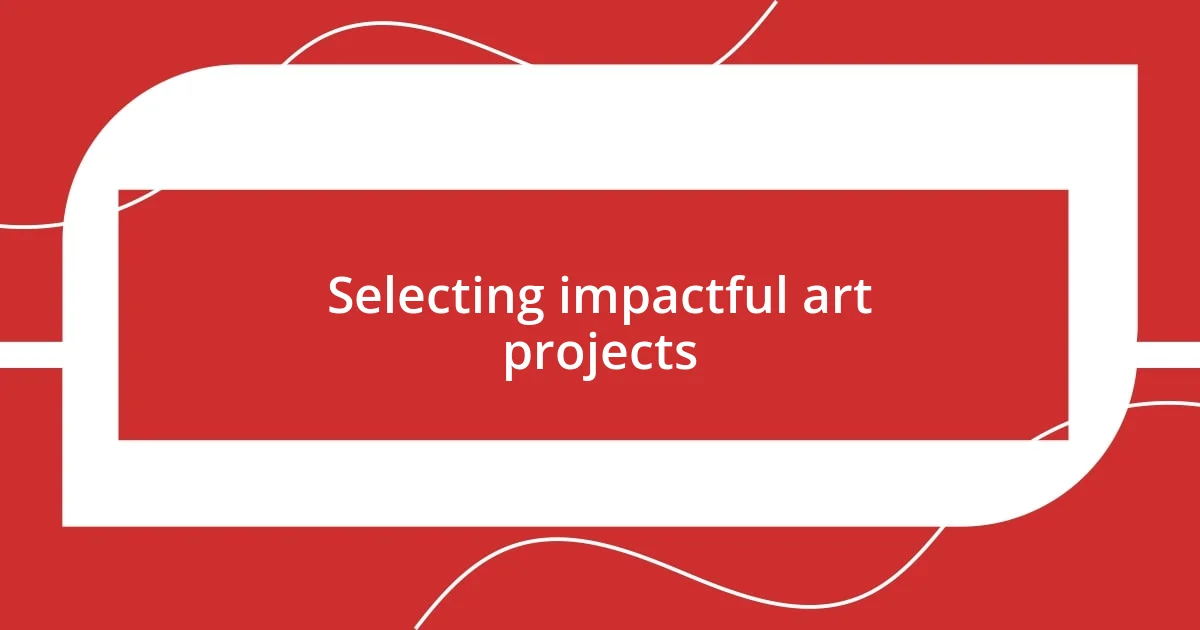
Selecting impactful art projects
Selecting impactful art projects is a process that goes beyond aesthetic appeal; it requires an emotional connection to the community’s values. For instance, when I chose to depict local legends in a public mural, I didn’t just want it to look good. I wanted it to resonate with the history and identity of the community. Reflecting on the pride I saw in people’s faces when they recognized familiar stories made it clear that my choice had struck a chord.
Moreover, I learned that it’s essential to balance creativity with cultural sensitivity. During one art workshop, we explored traditional crafts from various cultures represented in our community. Watching participants from different backgrounds collaborate was a profound experience. It reinforced my belief that impactful projects not only celebrate diversity but also foster unity. Have you ever experienced the beauty of a shared creative moment? I certainly did, and it underscored the magic that occurs when art brings people together.
My approach also emphasizes sustainability and long-term engagement. When I selected a project aimed at environmental awareness, I saw how art could educate while entertaining. We painted a vibrant mural showcasing local wildlife, which involved schools and local environmental groups. The excitement around the project sparked ongoing discussions about conservation efforts, creating an impact that went far beyond the initial artwork. It drove home the point that the right project can resonate deeply and lead to ongoing community growth and awareness.
| Criteria | Examples |
|---|---|
| Emotional Resonance | Using local stories and history in projects |
| Cultural Sensitivity | Incorporating diverse artistic traditions |
| Community Engagement | Collaborative workshops that encourage input |
| Sustainability | Addressing social or environmental issues through art |
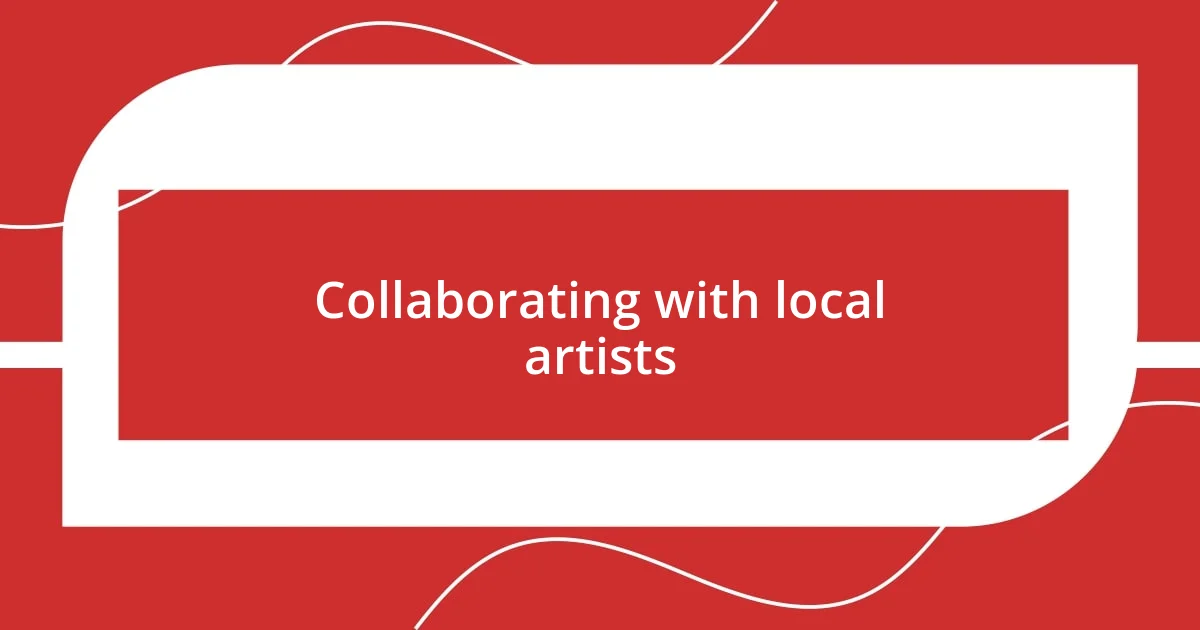
Collaborating with local artists
Collaborating with local artists can be one of the most fulfilling aspects of community art engagement. I remember partnering with a talented muralist who had strong ties to the neighborhood; her passion for the area brought an authentic touch to our project. Seeing her enthusiasm inspired others to contribute their ideas and perspectives. How often do you encounter that rare spark of inspiration that ignites creativity within a group? It truly reinforces the magic that occurs when local talent leads the charge.
What always amazes me is the diverse skill set local artists bring to the table. While working on an art installation, we invited a sculptor known for his eco-friendly art to join our efforts. He not only taught the community about sustainable materials but also instilled a sense of pride in creating something meaningful from what might be discarded. This blend of creativity and sustainability deepened the community’s connection to the environment. Have you ever seen how creativity can change one’s perspective? I watched it happen in real-time as we collaboratively transformed waste into art.
Involving local artists doesn’t just generate great artwork; it fosters a sense of ownership and belonging. When I coordinated an open studio session, artists shared their creative processes while the community participated in hands-on activities. There was laughter, discovery, and a beautiful sense of togetherness. I found it heartwarming when one participant expressed how connected they felt after learning about the work behind each piece. Isn’t it incredible how collaboration can transform the way we see art and each other? It’s experiences like these that have solidified my belief in the power of art to weave communities closer together.
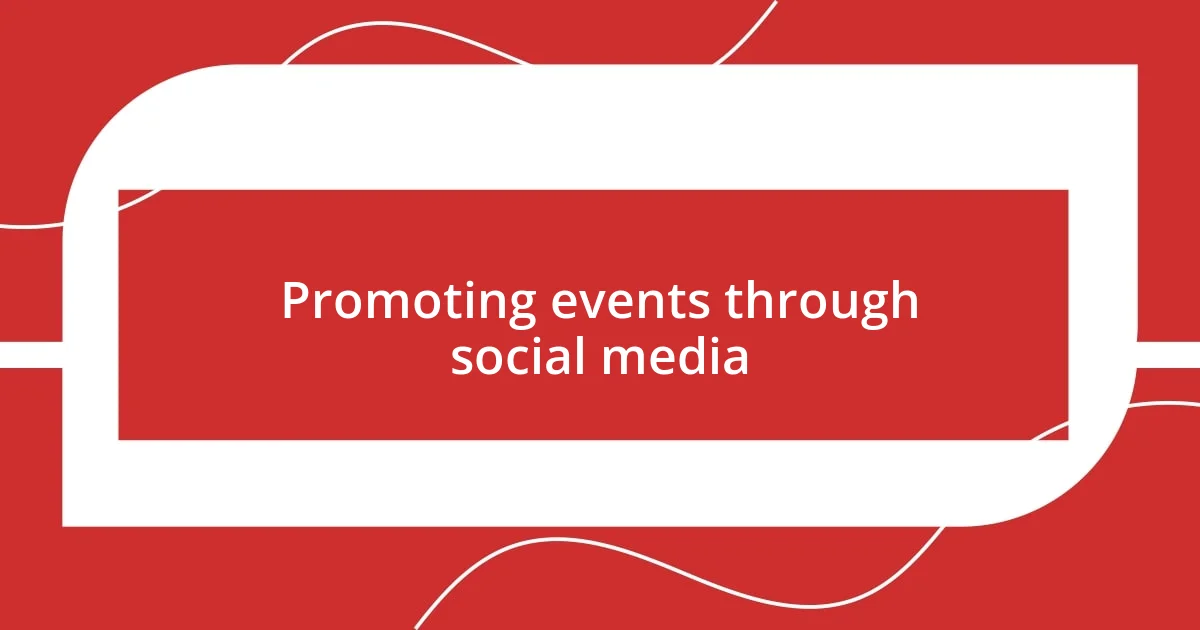
Promoting events through social media
When it comes to promoting events through social media, I’ve found that the visuals are absolutely crucial. Last summer, I shared photos from an upcoming art show featuring vibrant, eye-catching pieces created by local artists. The reaction was immediate – likes, shares, and comments flooded in, turning a simple post into a buzz of excitement. Have you ever noticed how a striking image can spark curiosity? It’s amazing how a single picture can convey the energy and spirit of an event, inviting others to join in.
Engagement is another key element I prioritize in my social media strategy. I often post behind-the-scenes content, like video snippets of artists setting up their work. This not only builds anticipation but allows the community to feel like they’re part of the process. I remember one particular event where I live-streamed a mural being painted. The real-time feedback and encouragement from viewers were heartwarming; it felt as if we were all creating something together. Isn’t it uplifting to witness collective enthusiasm, even digitally?
Finally, I’ve learned the importance of storytelling in every post. When promoting a community art project, I make it a point to share the stories behind the artists and their inspirations. For instance, highlighting how a young artist turned personal challenges into vibrant expressions of hope resonated deeply with many. I often ask my followers how they relate to these stories, which opens up a dialogue that fosters community connection. Have you seen how narratives can transform passive followers into engaged supporters? It’s a powerful reminder of the human experience at the heart of art.
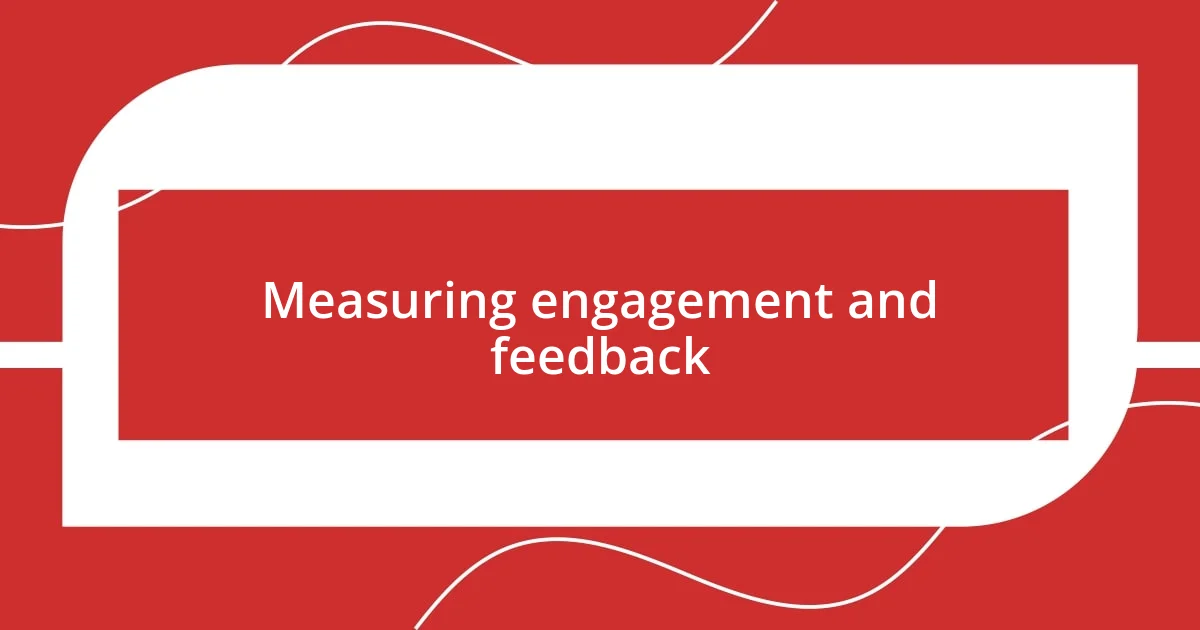
Measuring engagement and feedback
Measuring engagement and feedback is crucial for understanding the impact of community art initiatives. For instance, during a public art event, I decided to distribute simple feedback forms to gather insights from participants. The responses were enlightening; many people expressed how the event made them feel a sense of belonging, reinforcing the idea that art creates connections. Doesn’t it feel rewarding when people open up about their experiences?
I also use digital tools to assess engagement levels. After one particular exhibition, I analyzed social media interactions to see which artworks resonated most with the audience. It was fascinating to discover that a piece reflecting local history sparked deeper discussions online. Why do certain themes resonate more than others? For me, it highlights the importance of understanding community values and interests in shaping future projects.
Another effective method I’ve found is hosting a community feedback evening. When we sat together discussing the recent projects, I noticed how participants shared their perspectives and suggestions freely. There’s something magical about gathering people in one space to reflect on shared experiences. Isn’t it profound to witness the collective insights that emerge when individuals feel heard? This dialogue not only enriches future projects but also strengthens community bonds.
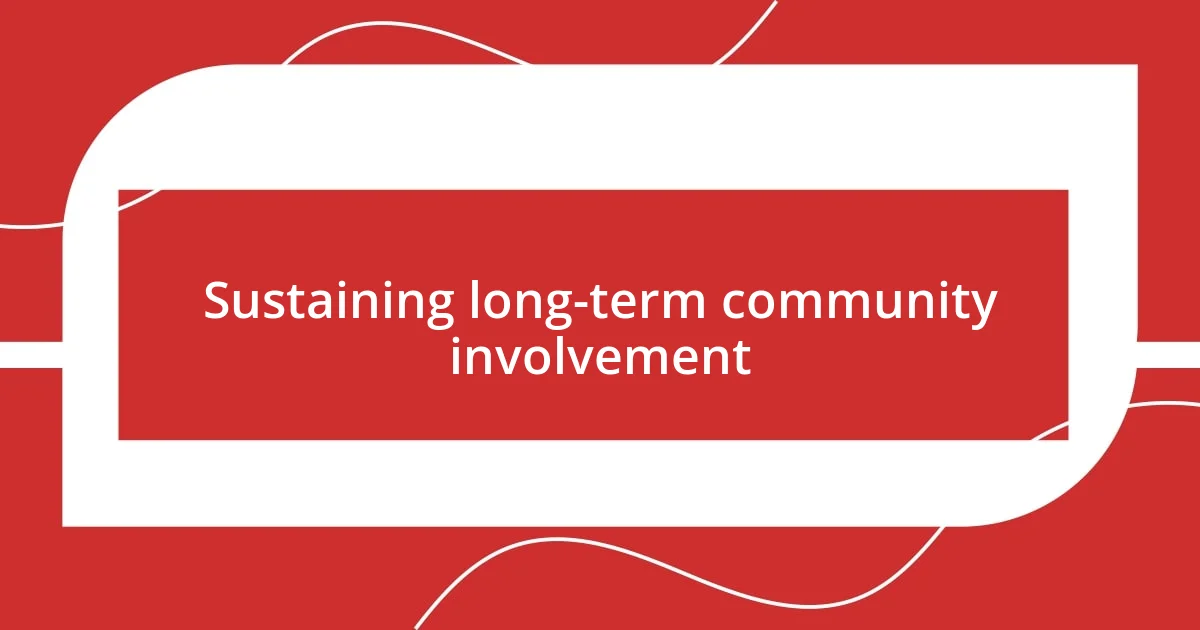
Sustaining long-term community involvement
Sustaining long-term community involvement is all about creating lasting relationships. I remember when I initiated a monthly art workshop; I didn’t just want attendees to participate one time and leave. Instead, I aimed to build a space that felt like home. Each month, we gathered not just to create, but to share stories and experiences. I was amazed at how quickly friendships formed, making every session feel like a reunion. Have you ever felt that kind of connection that keeps you coming back for more?
To keep that momentum, I also focused on responsiveness. After a few workshops, I started a simple routine where I checked in with attendees via email. I’d ask what they enjoyed most and what they’d like to see in future sessions. One thoughtful reply from a participant made my heart swell; she mentioned a desire to explore different art styles that represented her cultural background. Listening deeply has shown me that genuine interest fosters loyalty. It’s invaluable to witness this relationship blossoming as members feel their voices matter.
Additionally, celebrating milestones can significantly enhance community ties. At our one-year workshop anniversary, I hosted a mini-exhibition showcasing participants’ work. The joy on their faces as we applauded their creativity was indescribable. I’ve realized that these celebrations are more than events; they’re acknowledgments of everyone’s commitment. Doesn’t it feel empowering to be part of something that celebrates collective achievements? It’s this blend of recognition and community that inspires ongoing engagement, ensuring that our artistic journey continues to thrive together.
